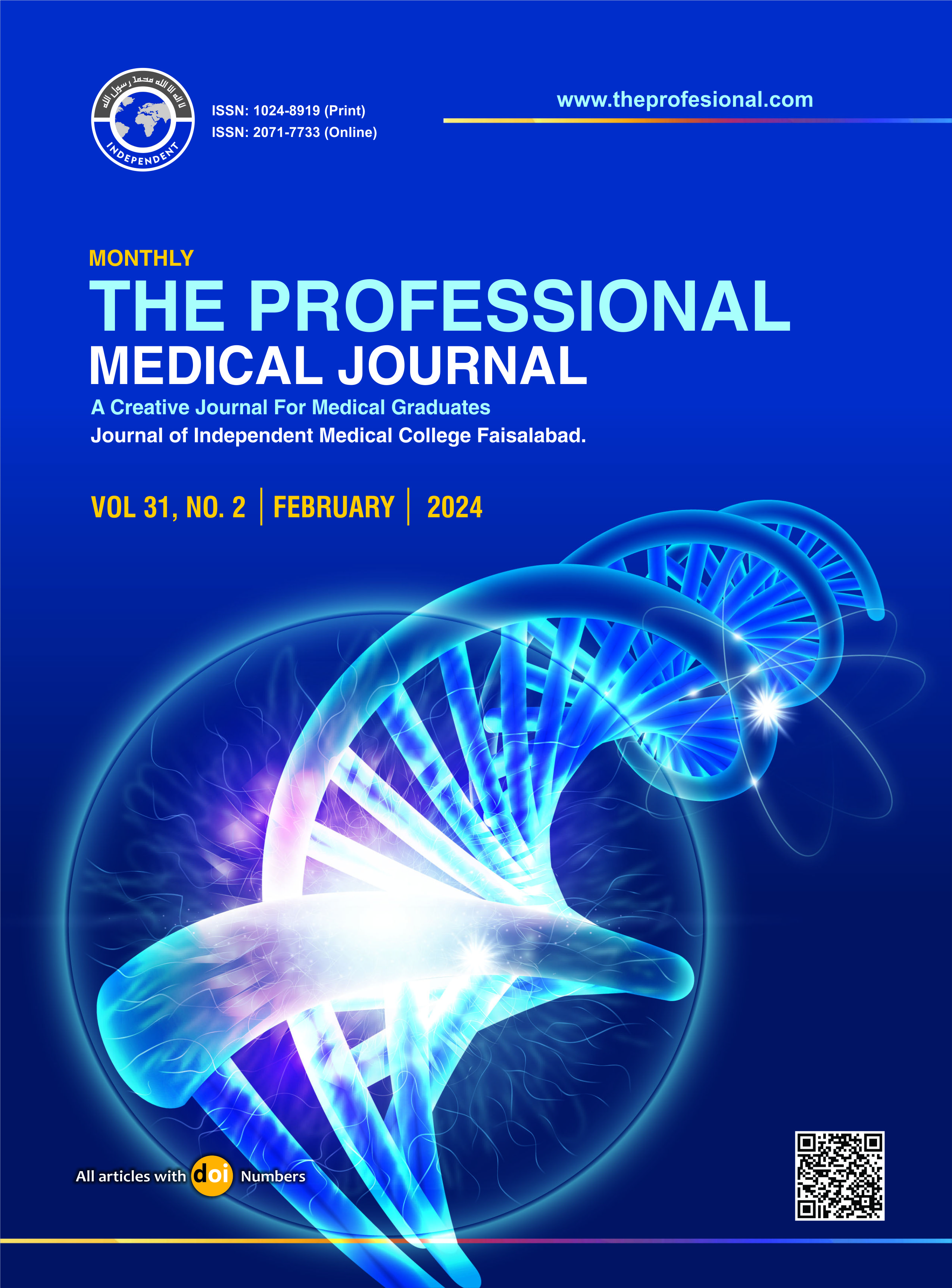Clinical presentations and complications of parapneumonic effusion and pleural empyema in children presenting in a tertiary care setup.
DOI:
https://doi.org/10.29309/TPMJ/2024.31.02.7942Keywords:
Cough, Fever, Parapneumonic Effusion, Pneumothorax, Pleural EffusionAbstract
Objective: To evaluate the clinical presentations and complications of parapneumonic effusion (PPE) and pleural empyema (PE) in children presenting in a tertiary care setup in Karachi. Study Design: Cross-sectional study. Setting: Medical Units of National Institute of Child Health, Karachi, Pakistan. Period: July 2022 to June 2023. Material & Methods: Hospitalized children of either gender, aged between 1 month and 12 years diagnosed with PPE or PE on the basis of radiological findings were analyzed. Baseline laboratory investigations were done. Complications of PPE/PE were noted. Outcome was observed in the form of discharged, referred or mortality. Results: In a total of 86 with PPE/PE, 61.6% were boys while the overall mean age was 4.35±3.17 years. Common clinical symptoms included fever (100%), decreased air entry (86%), cough (75.6%), and respiratory difficulty (74.4%). Blood cultures revealed bacterial infections in 10.5% of cases, while most common isolates were Staphylococcus aureus and Pseudomonas. Positive pleural fluid cultures noted in 39.5% of cases while pseudomonas and staphylococcus aureus were the most common bacterial isolates. Most commonly used antimicrobials were Vancomycin, Ceftriaxone, Tazobactum+Piperacillin, and Linezolid. Tube thoracostomy was performed in 96.5% of patients. Most frequent complications of PPE/PE included residual organized empyema (36%), pneumothorax (9.3%), and sepsis (9.1%). Overall, the mortality was noted in 5.8% cases. Conclusion: Most frequent clinical presentations of PPE/PE include fever, cough, respiratory difficulty, and abdominal pain, with fever being universal. Staphylococcus aureus and Pseudomonas were the most common bacterial isolates. The most common complications were residual organized empyema, pneumothorax, and sepsis.
Downloads
Published
Issue
Section
License
Copyright (c) 2024 The Professional Medical Journal

This work is licensed under a Creative Commons Attribution-NonCommercial 4.0 International License.


